Last month, two persons were killed and more than 20 were injured in a stampede that followed a fire which broke out at the state-run Murshidabad Medical College in Bengal. Days later, another fire broke out in the state-run Sambhunath Pandit Hospital in Kolkata. This time, there were no casualties.
Suddenly, there seems to be a slew of hospital fires in Bengal.
Things aren’t exactly in order in the other parts of the country either. Earlier this year, a fire broke out at the Mahatma Gandhi Memorial hospital in Mumbai’s Parel area. In 2010, a major fire broke out in a private super speciality hospital in Hyderabad in which one patient died. And of course, there is the horrific incident of December 9, 2011 when a fire that started in the basement of Kolkata’s AMRI Hospital led to the death of 92 patients.
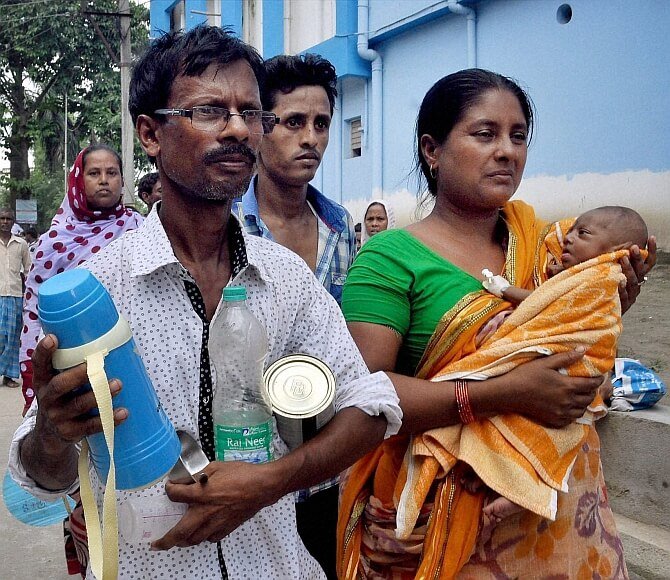
But how does our Capital city fare when it comes to fire safety? According to data shared by Delhi Fire Services, over 11,000 fire incidents were reported in the city from April to July 2016. Delhi Fire Service Rules, 2010 under Delhi Fire Service Act, 2007 lists some rules that buildings have to follow in order to be better equipped to deal with emergency situations. Armed with the list, we visited four of the biggest government hospitals in the Capital and this is what we found.
Govind Ballabh Pant Hospital
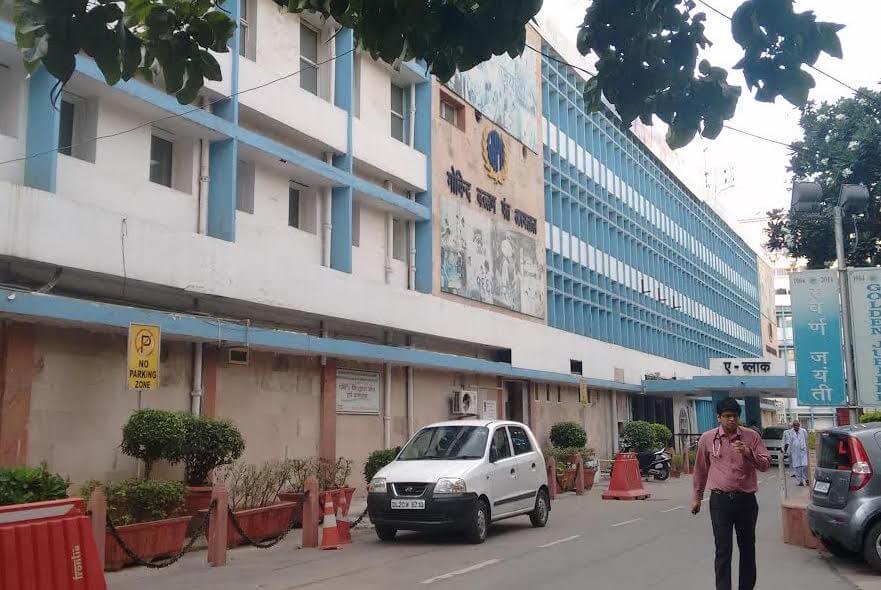
One of the largest hospitals in central Delhi, it offers super specialty treatment to almost 3,00,000 patients in the Out Patient Department (OPD) and almost 15,000 patients in the general and private ward every year.
Here is what we found:
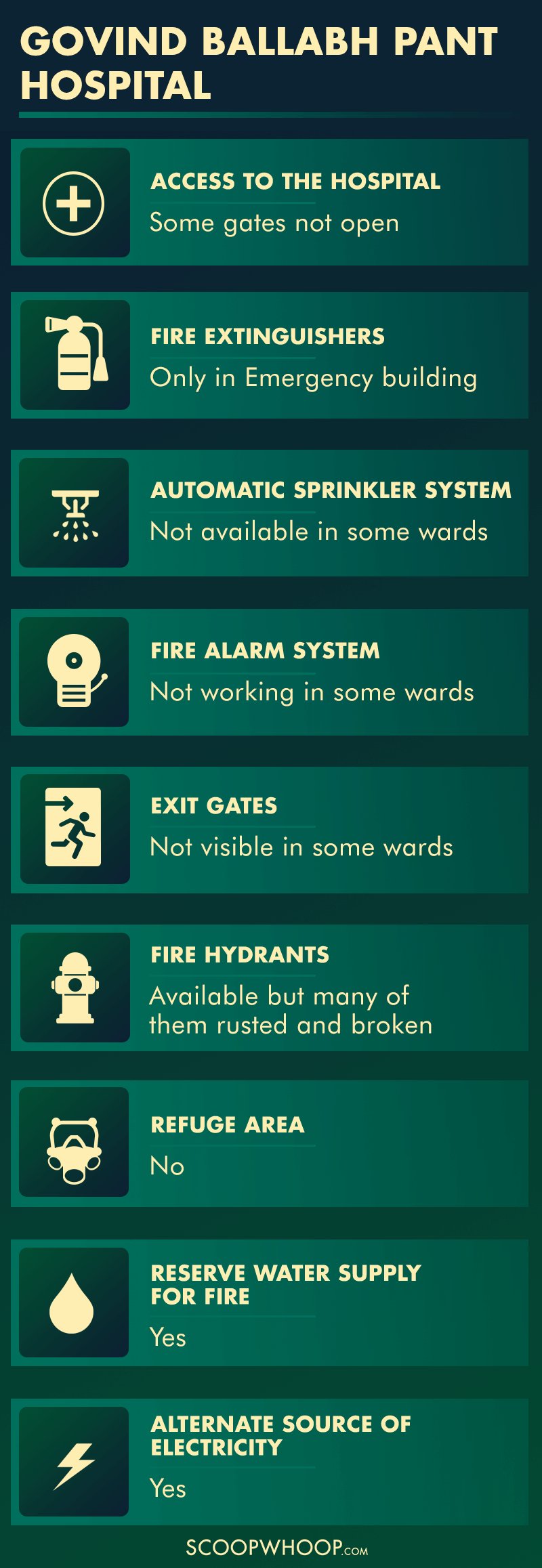
The Block A of the hospital, which also happens to be the older block, has wide ramps and visible exit signage. However, the alarm systems of some wards were not working.
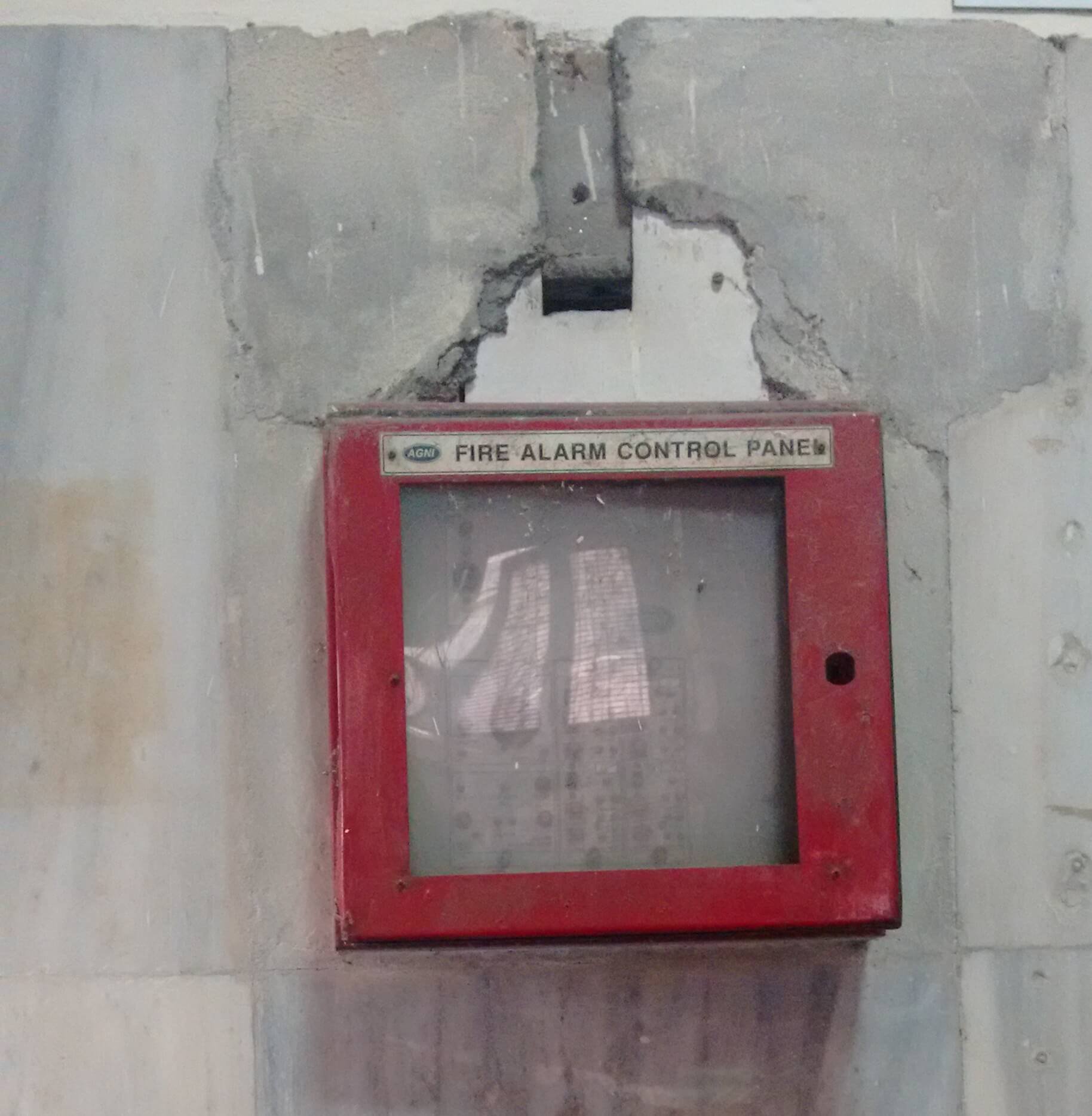
Most wards of this block didn’t have an operational automatic sprinkler system. Some of the fire hydrants looked old and rusty, some didn’t have pipes.
The director of the hospital, Rajeev Chawla, refused to comment on this, despite our repeated requests.
Lok Nayak Jaiprakash Hospital
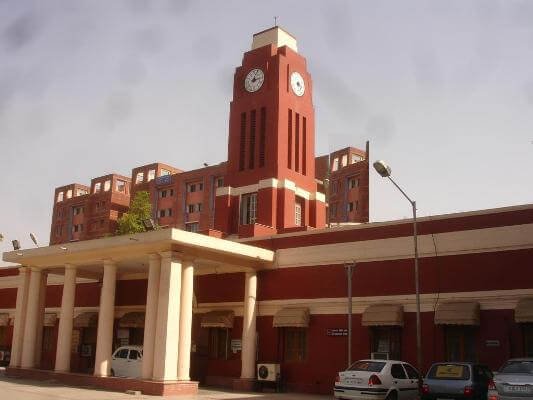
This centrally-located hospital receives patients not only from Delhi, but also neighbouring states such as Rajasthan, Uttar Pradesh, Haryana, Punjab and Uttaranchal.
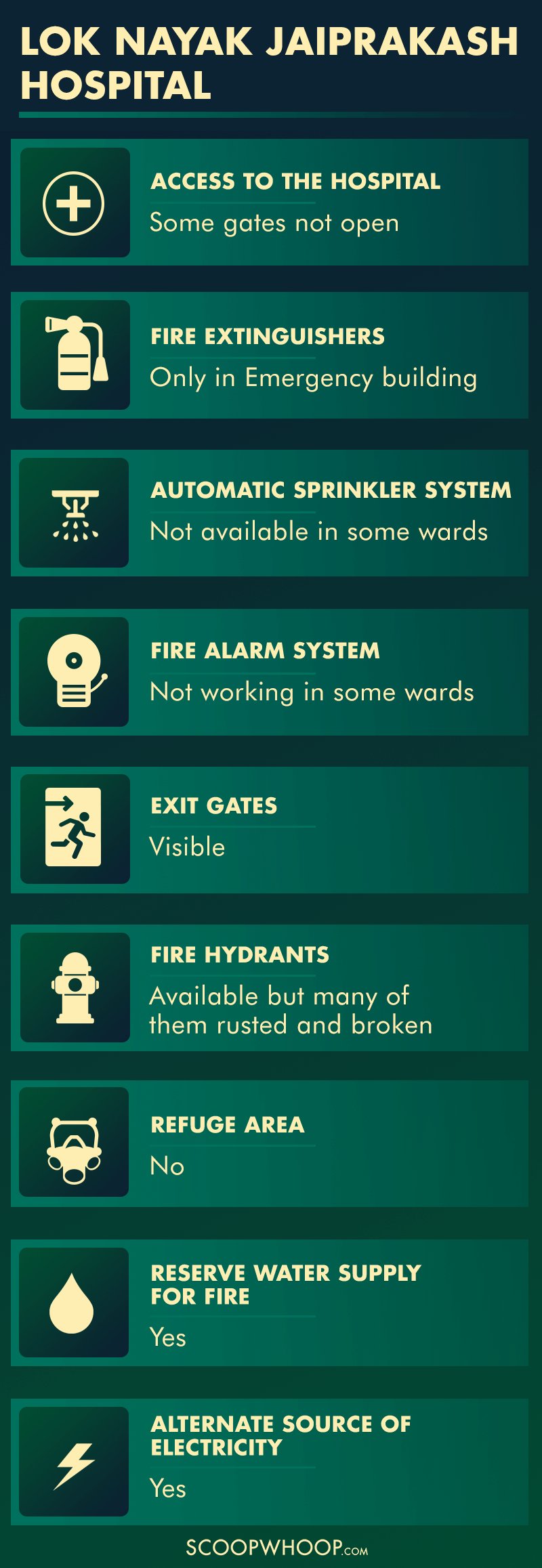
Although the recently-renovated OPD building of the hospital seems adequately equipped to handle emergency situations with wide exit areas and functional alarm systems, the maternity ward, which is housed in an older building, is a maze of corridors without proper exit routes.
Some of the exits were closed too, which spells disaster when it comes to emergency situations. We visited a pre-natal ward where we couldn’t spot a single automatic sprinkler. “The maternity ward here is a virtual tinderbox. We are not even sure if the fire extinguishers work. People can’t even figure out where the exit gates are,” said a student of LNJP Medical College.
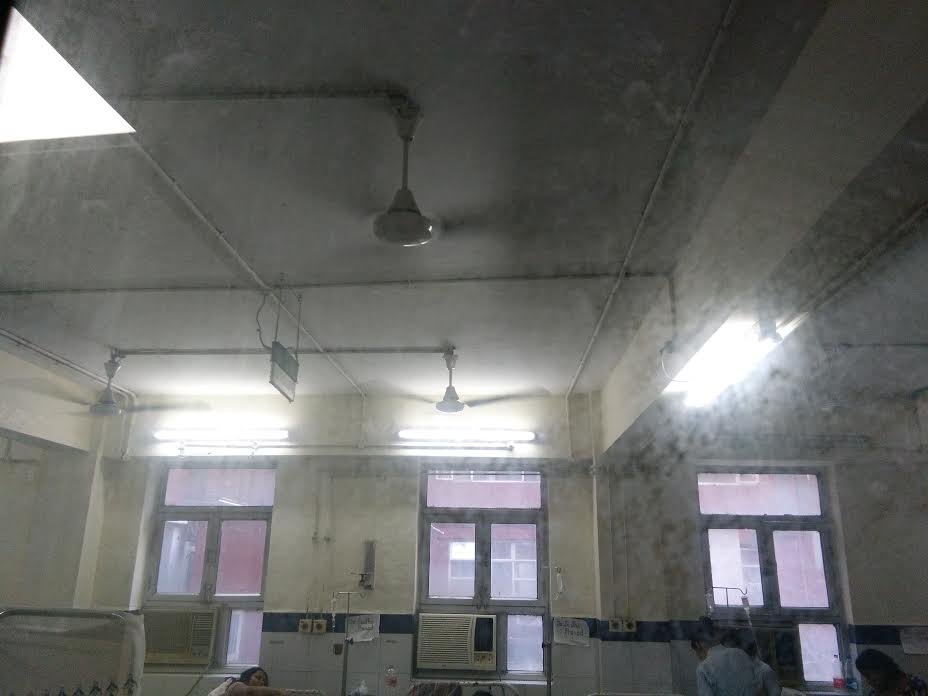
When contacted, the director of LNJP hospital, JC Passey, claimed that they are equipped to handle any kind of emergency. “Like all other hospitals we do have all the facilities to deal with any kind of mishaps inside the hospital. But I can’t go into details about whether everything is in place or not,” said Passey.
Baba Saheb Ambedkar Hospital
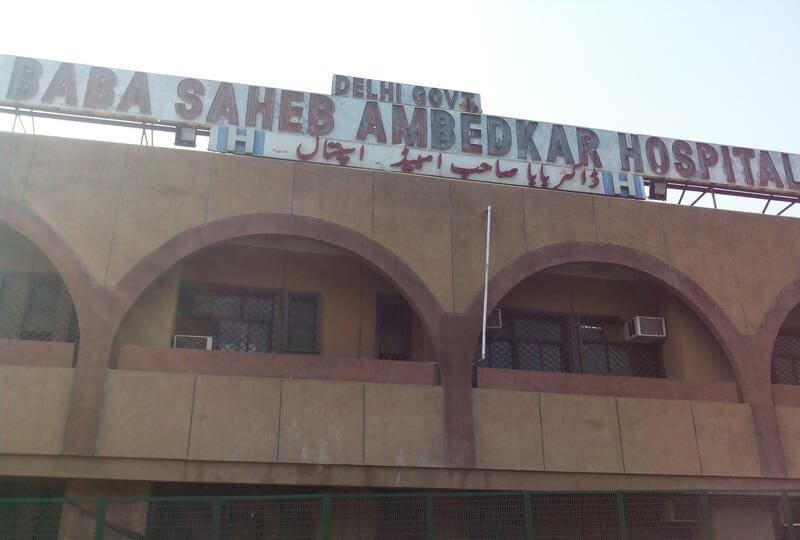
Established in 1999, the Baba Saheb Ambedkar Hospital is a 500-bed multi-specialty care hospital in Rohini.
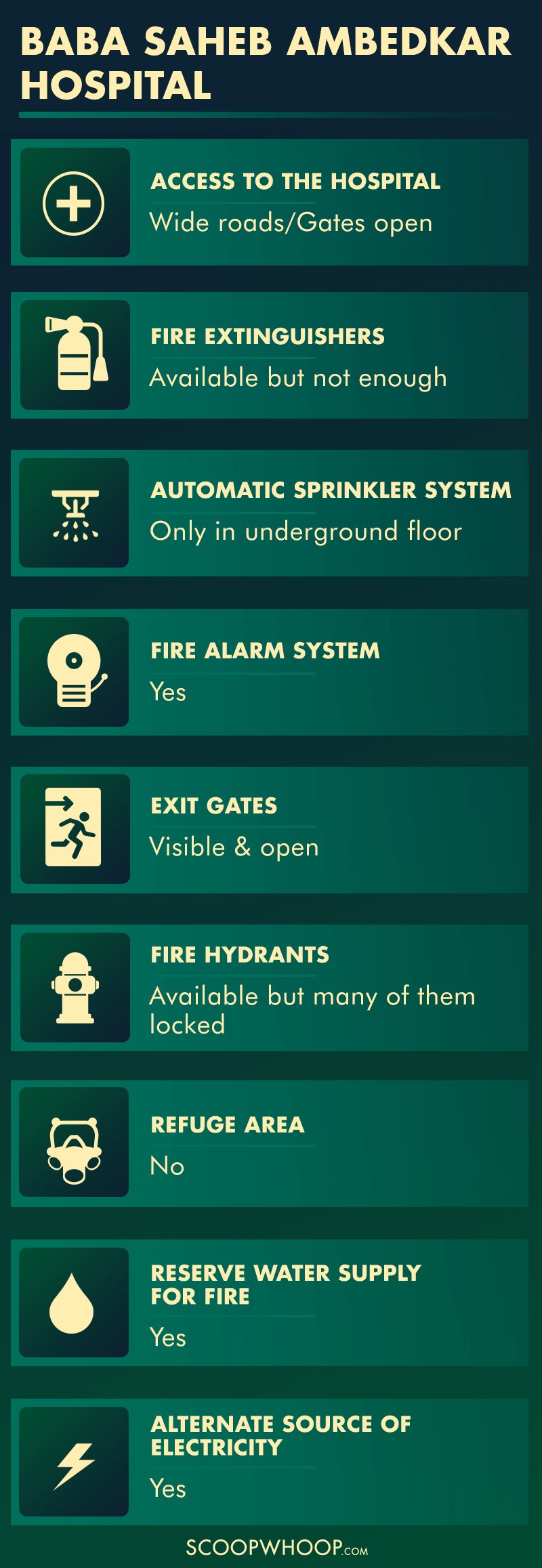
The major objection of the Delhi Fire Service department in granting a No Objection Certificate (NOC) to the hospital is the building’s underground medical gas plant.
“There’s no denying the fact that it’s a serious fire hazard. It’s the only reason the hospital has never got clearance from the fire service department,” an official, wishing anonymity, told ScoopWhoop News.
While walking through the multi-storey hospital, a considerable number of exit signage and fire alarm systems on the walls and doors are easy to spot. Yet, there were only a few fire extinguishers visible.
In Ward No 21 and 22, the red rectangular casing kept for the fire extinguishers is empty. According to the officials in the Fire Control Room of the hospital, the mandatory automatic sprinkler system is available only in the underground floor of the hospital.
“Recently, there was a leakage in the water pipeline for hydrants. The repairing process was completed just days ago,” said BC Shukla, a junior engineer of the hospital’s electric division.
Deen Dayal Upadhyay Hospital
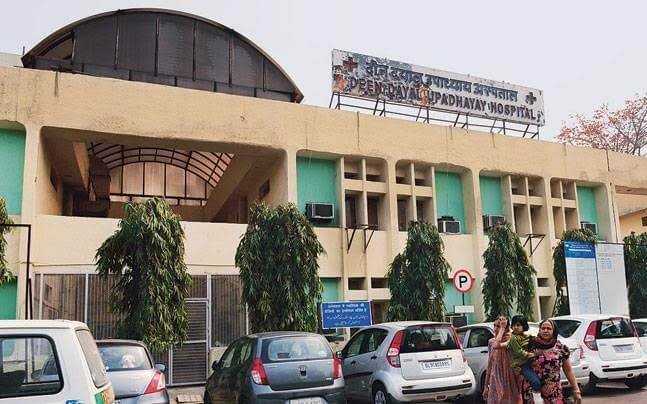
With a bed-capacity of 650, Deen Dayal Upadhyay Hospital is one of the oldest government hospitals in Delhi. The hospital caters to a footfall of 4000-5000 patients daily.
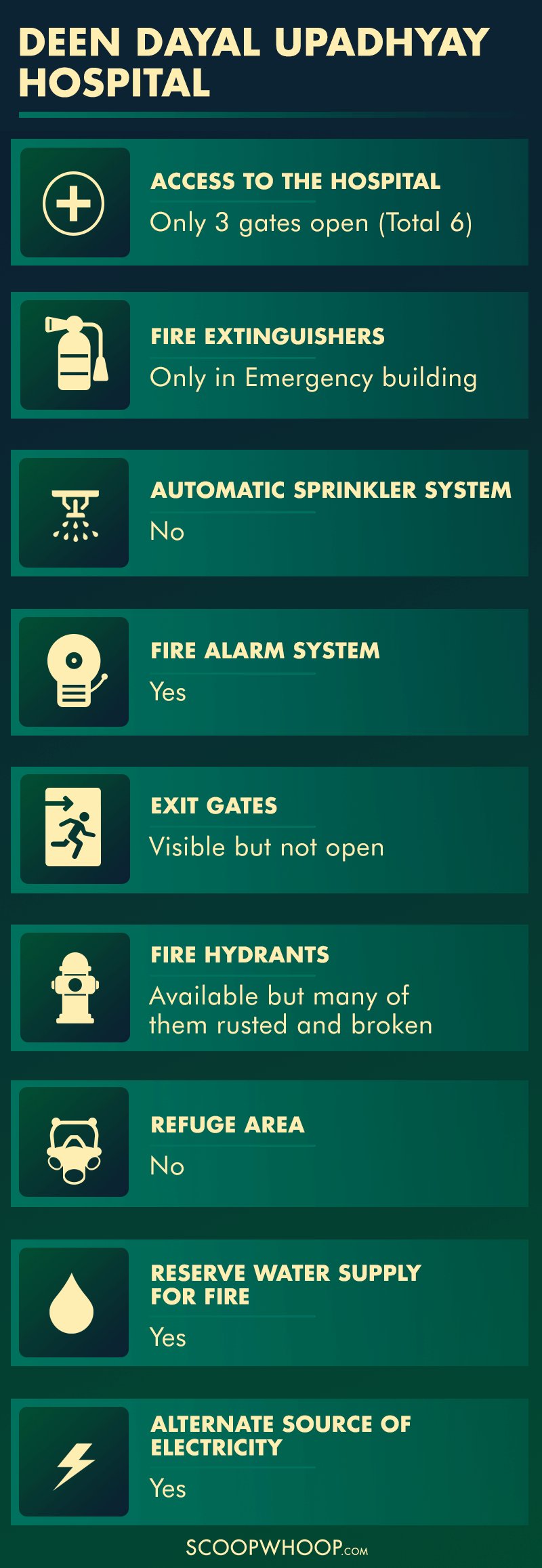
According to records available with Delhi Fire Service, the hospital hasn’t received the mandatory fire safety certificate from the department.
While the hospital has six main gates for entry, only three are open to regulate the inflow and outflow of patients and visitors. The main gate to enter the hospital is located on a narrow road near Clock Tower in Hari Nagar which often witnesses traffic jams owing to rush of patients.
Records available with the Delhi Fire Service and accessed by ScoopWhoop News also verify this claim. In fact, the blockage of internal roads is one of the grounds for rejection of the hospital’s application for a fire safety certificate.
Major healthcare buildings in the hospital lack an automatic sprinkler system and fire extinguishers.
According to DDU hospital’s Medical Officer, Dr Rishi Kanava, the ward block of the hospital does not have any fire extinguishers.
“Fire extinguishers and alarm system is installed in the Emergency building, while the wards only have an alarm system. Also, the emergency block does not have ramp,” he said.
A worrying situation to say the least.

















